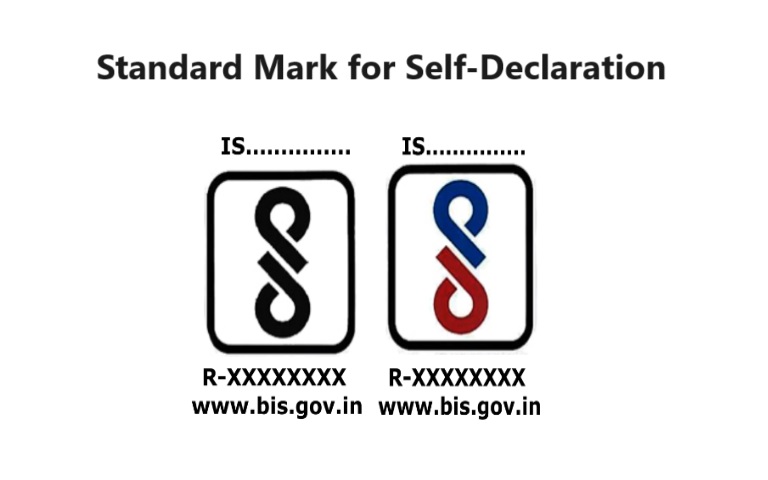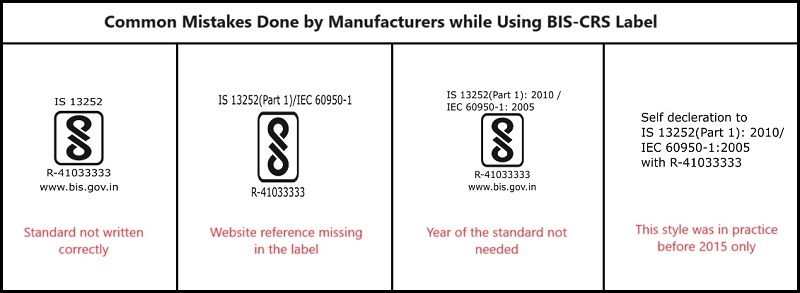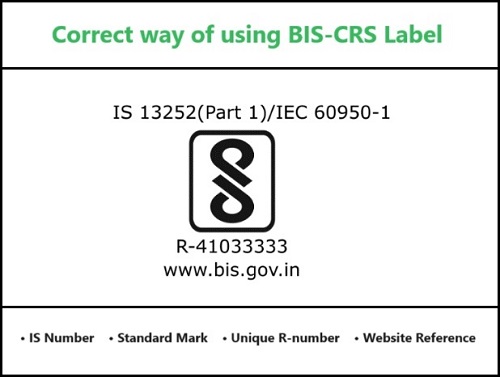Tel: 0129-4001010 Phone: +91 730 321 5033
Email: cs@absoluteveritas.com
BIS-CRS Labelling Guidelines Explained: A Comprehensive Overview
Under the BIS-CRS Labelling Scheme, which currently covers 78 mandatory product categories, all products must receive BIS approval before being sold in India. This certification ensures product quality, safety, and trustworthiness.
As a savvy consumer, it's crucial to check and verify the BIS-CRS label before purchasing any electronic or other goods, whether from physical stores or e-commerce websites.
If you've noticed the BIS-CRS logo on products and want to understand its significance and importance, this article is for you.
What is BIS-CRS?
The Bureau of Indian Standards (BIS) oversees the Compulsory Registration Scheme (CRS) 2012 under Scheme-II. This initiative, introduced by the Ministry of Electronics and Information Technology (MeitY), mandates that manufacturers obtain a BIS-CRS registration certificate for their electronic and IT products before launching them in India.
The primary goal is to ensure that products meet standardized quality levels by requiring BIS certification. Initially, the CRS covered 15 product categories, but recent updates have expanded the scheme to include 79 products, each adhering to specific Indian Standards.
Stay informed about these regulations to ensure compliance and product quality.
According to this order, manufacturers, retailers, and importers must ensure that their products conform to the specified Indian Standards and display the Standard Mark with a unique registration number.
The BIS CRS Registration Certificate is valid for two years and can be renewed, provided there are no changes to the product or its standards. Ensure compliance to avoid penalties and maintain product quality.
What is a Standard Mark?
A Standard Mark signifies that a product, article, process, system, or service meets an Indian Standard or a standard recognized by the Bureau of Indian Standards (BIS). This mark is displayed on the product itself or on its label or packaging, ensuring compliance and quality
BIS-CRS Standard Mark for Self-Declaration: Key Details
The BIS CRS scheme allows manufacturers to self-declare conformity. The logo features "SELF" in the upper half and "DECLARATION" in the lower half, representing self-declaration of compliance.
Before December 2015, manufacturers used a statement like “Self-Declaration of Conforming to IS xxxxxx-x with R-xxxxxxxx” for self-declared products. However, BIS introduced a dedicated Standard Mark for self-declaration in December 2015, streamlining the certification process.

Please note that the “Self-Declaration of Conforming to ISI” provision is no longer valid. Now, only the BIS Standard Mark with a unique R-number, IS, and website reference should be prominently displayed and visible.
Labelling Requirements Under Para 6 of Scheme II
-
Visibility of the Standard Mark: The Standard Mark must be displayed on the product, packaging, or both. It should be easily visible, legible, and non-removable.
-
Font Size for Information: The IS number, unique registration number, and accompanying text must be displayed in Arial Font size 6 or larger.
-
Colour Specifications: The Standard Mark can be single-colour or multi-colour. For multi-colour marks, use Red, Blue, and Black. For single-colour marks, there are no restrictions on the choice of colour.
-
Required Information: The Standard Mark must include the registration number and references to IS & BIS websites as specified in the provided image.
Guidelines for E-Labeling Under the BIS-CRS Scheme
Under the BIS-CRS Scheme, even if a product features an e-label with a link to a BIS website, it must still display the standard mark.
E-labeling is applicable for products with integrated (non-removable) displays but is not mandatory. Manufacturers can choose between physical or e-labels.
E-Labeling Requirements:
-
Physical Label Requirement: Devices using e-labels must also have a physical label on their packaging. For individually packaged items, a removable adhesive label is acceptable.
-
No Additional Accessories Needed: To access the e-label, devices should not require additional accessories such as SIM/USIM cards.
-
Secure Compliance Information: The compliance information must be programmed by the responsible party and protected from modification by third parties.
-
User Manual Instructions: The responsible party must include instructions in the user manual on how to access the e-label information, ensuring users can easily view it without needing any codes.
Common Mistakes in Using BIS-CRS Labels
Manufacturers often make mistakes when applying BIS-CRS labels. Common errors include incorrect placement or formatting of the standard mark.

Proper Use of BIS-CRS Labels
Refer to the image below for the correct application of the BIS-CRS standard mark, ensuring compliance and proper display.

WHY USE ABSOLUTE VERITAS (AV) FOR BIS CERTIFICATION?
Absolute Veritas is a prominent organisation from the private sector of India primarily dealing with the Inspection, Testing, Audits, Certification of products& consulting services to various industries in India and worldwide, ensuring compliance with regulatory standards and industry requirements. Offering a comprehensive range of services including product certification, testing, training, auditing, and compliance services, Absolute Veritas helps manufacturers and importers achieve higher production efficiency and quality standards.
Absolute Veritas (AV) will handle end to end pre-registration request, sample preparation, documentation, testing and application process for BIS Certification
For any questions regarding the most recent update on BIS registration licenses, please reach out to us via email at cs@absoluteveritas.com







 ❮
❮
